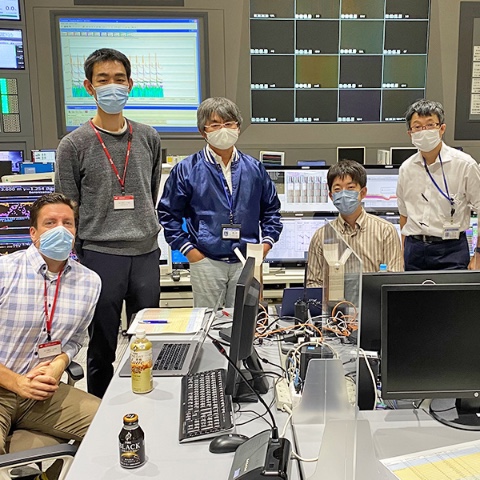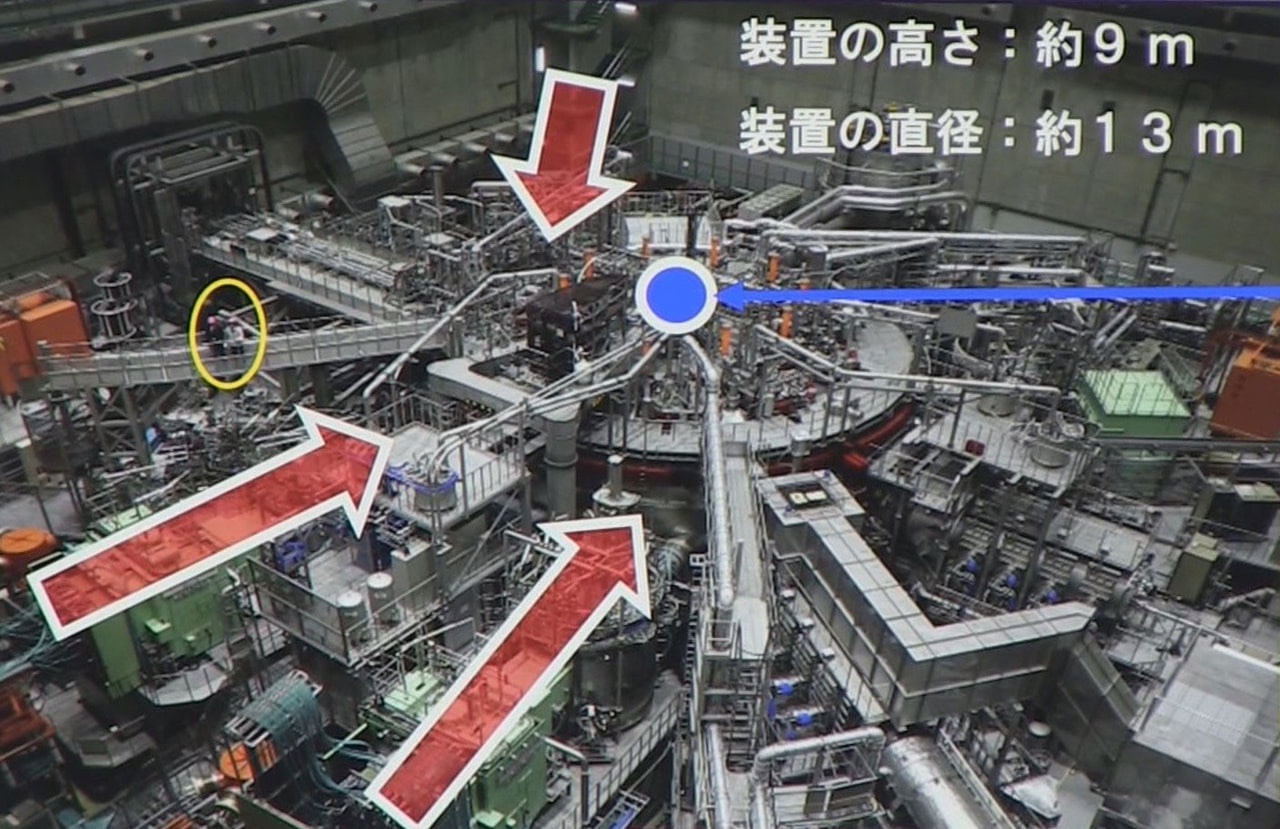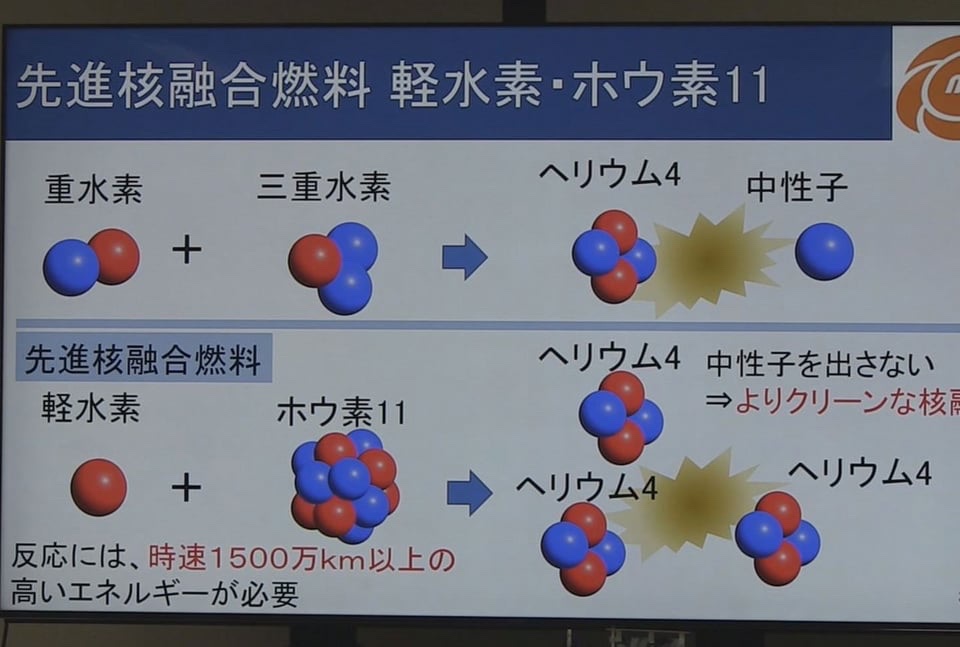


國家核聚變科學研究所:沒有輻射或中子!
– “世界首創”無輻射核聚變反應演示 –
國家融合科學研究所:
ー岐阜縣土岐市融合科學研究所ー
3月9日,世界首次演示無輻射核聚變反應。
我們正在推廣我們的研究成果,作為實現清潔聚變反應堆的第一步。
本次研究成果:
2023 年 2 月發表在 Nature Communications 上。
國家融合科學研究所
泰科技
在聯合研究中,輕氫和硼11被用作核聚變燃料。
我們在世界上首次展示了不產生中子的核聚變反應,中子是輻射。
大型螺旋裝置:
迄今為止,我一直在進行“在實驗室的大型螺旋裝置中使用比氫氣重的氘的研究”。
但是,會產生少量輻射。
目前的研究:
-使用高能光束-
輕氫以超過每小時1500萬公里的速度與硼11碰撞,
證實了核聚變反應。
新聞 | 岐阜放送
https://www.zf-web.com/news/2023/03/09/220900.html
National Institute for Fusion Science : Pas de rayonnement ni de neutrons !
– “Première au monde” Démonstration de la réaction de fusion nucléaire sans rayonnement –
Institut national des sciences de la fusion :
ーInstitut national des sciences de la fusion de la ville de Toki, préfecture de Gifuー
Le 9 mars, première démonstration au monde d’une réaction de fusion nucléaire sans rayonnement.
Nous faisons la promotion de nos résultats de recherche comme première étape vers la réalisation d’un réacteur à fusion propre.
Résultats de recherche de cette époque :
Publié dans Nature Communications en février 2023.
Institut national des sciences de la fusion
TAE Technologies
Dans des recherches conjointes, l’hydrogène léger et le bore 11 sont utilisés comme combustible de fusion nucléaire.
Nous avons démontré pour la première fois au monde une réaction de fusion nucléaire qui ne génère pas de neutrons, qui sont des rayonnements.
Grand appareil hélicoïdal :
Jusqu’à présent, j’ai mené “des recherches utilisant du deutérium, qui est plus lourd que l’hydrogène gazeux, dans un grand dispositif hélicoïdal en laboratoire”.
Cependant, une petite quantité de rayonnement a été générée.
Les recherches en cours:
-Utilisation d’un faisceau de haute énergie-
L’hydrogène léger entre en collision avec le bore 11 à une vitesse supérieure à 15 millions de kilomètres par heure,
confirmé la réaction de fusion nucléaire.
Actualités |
National Institute for Fusion Science: Keine Strahlung oder Neutronen!
– “Weltweit erste” Demonstration einer Kernfusionsreaktion ohne Strahlung –
Nationales Institut für Fusionswissenschaft:
ーNationales Institut für Fusionswissenschaft in Toki City, Präfektur Gifuー
Am 9. März die weltweit erste Demonstration der Kernfusionsreaktion ohne Strahlung.
Wir fördern unsere Forschungsergebnisse als ersten Schritt zur Realisierung eines sauberen Fusionsreaktors.
Forschungsergebnisse dieser Zeit:
Veröffentlicht in Nature Communications im Februar 2023.
Nationales Institut für Fusionswissenschaft
TAE-Technologien
In gemeinsamer Forschung werden leichter Wasserstoff und Bor-11 als Kernfusionsbrennstoff verwendet.
Wir haben zum ersten Mal weltweit eine Kernfusionsreaktion demonstriert, die keine Neutronen erzeugt, die Strahlung sind.
Großes spiralförmiges Gerät:
Bisher habe ich “Forschungen mit Deuterium, das schwerer als Wasserstoffgas ist, in einem großen spiralförmigen Gerät im Labor” durchgeführt.
Es wurde jedoch eine geringe Menge an Strahlung erzeugt.
Aktuelle Forschung:
-Mit einem hochenergetischen Strahl-
Leichter Wasserstoff kollidiert mit Bor 11 mit einer Geschwindigkeit von über 15 Millionen Kilometern pro Stunde,
bestätigte die Kernfusionsreaktion.
Nachrichten | Gifu-Rundfunk
TAE Technologies issued the following statement
FOOTHILL RANCH, Calif.
February 2023
As fusion developers around the world race to commercialize fusion energy,
TAE Technologies has pioneered the pursuit of the cleanest and most economical path
to providing electricity with hydrogen-boron (also known as p-B11 or p11B), an abundant, environmentally sound fuel.
Today the company is announcing,
in collaboration with Japan’s National Institute for Fusion Science(NIFS),
a noteworthy research advancement: the first-ever hydrogen-boron fusion experiments in a magnetically confined fusion plasma.
In a peer-reviewed paper published by Nature Communications (“First measurements of p11B fusion in a magnetically confined plasma”),
scientists explain the outcome of the nuclear fusion reaction of hydrogen-boron in an experiment in NIFS’ Large Helical Device (LHD).
This paper describes the experimental work of producing the conditions necessary for hydrogen-boron fusion in the LHD plasma and TAE’s development of a detector
to make measurements of the hydrogen-boron reaction products: helium nuclei, known as alpha particles.
The finding reflects years of collaborative international scientific fusion research,
and represents a milestone in TAE’s mission
to develop commercial fusion power with hydrogen-boron, the cleanest, most cost-competitive, and most sustainable fuel cycle for fusion.
TAE announced its partnership
with NIFS in 2021, teaming up with esteemed scholars at the inter-university research institute located in Toki City, Japan.
The three-year joint research project bloomed from a longstanding collaboration between American and Japanese fusion researchers to explore aneutronic fusion